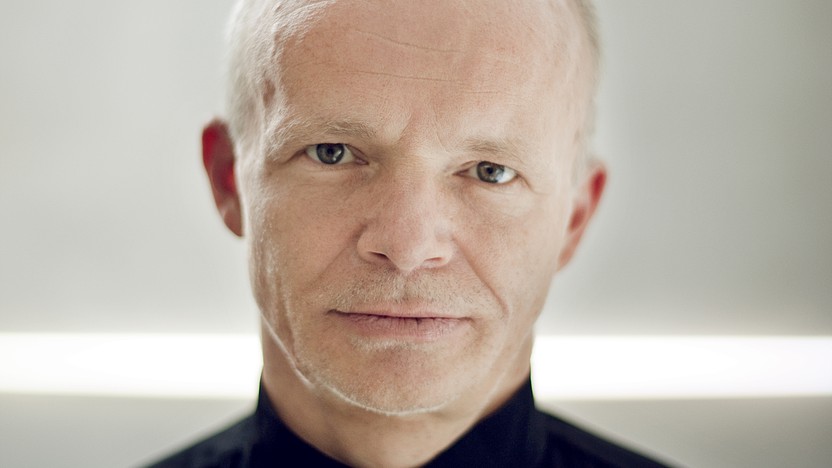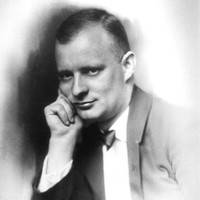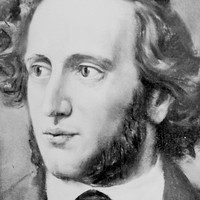Mendelssohn’s Scottish Symphony

Sponsored By
- May 20, 2016

- May 21, 2016


Sponsored By



In addition to ranking among the most significant German musical figures of his generation, Paul Hindemith is moreover renowned for the remarkable breadth of his abilities. He was a composer of stunning creative facility, capable of producing an impeccably crafted piece of music as easily as writing a letter. He was also an excellent violinist and violist (skilled enough to premiere William Walton’s Viola Concerto) and a competent clarinetist to boot.
In an era whose most prominent composers built their careers on orchestral music and opera, Hindemith made his name in chamber music. His oeuvre includes seven string quartets, of which the Fourth, his Opus 22, has enjoyed the most enduring popularity. (The work was premiered by the Amar Quartet, recognized in its day among Europe’s foremost quartets, and in which Hindemith was the violist.)
Hindemith composed his String Quartet no. 4 in 1921. It is a product of his early maturity, reflecting a young, cosmopolitan composer, exploring a wide variety of styles. The music of this period demonstrates the influence of composers ranging from Brahms and Strauss to Debussy, Ravel, Puccini, Schoenberg, and Stravinsky, as well as American jazz.
Over the next four decades, Hindemith’s music would become steelier, anti-Romantic, harmonically experimental, though always rooted in tonality. In the years following the Fourth Quartet’s premiere, Hindemith became a leading proponent of Gebrauchtsmusik—literally, “utility music”—an idea based on the belief that music should be practical, bridging the distance between modern composer and audience, rather than a Beethovenian vehicle for self-expression.
The Quartet might be heard as a precursor to Hindemith’s essays in Gebrauchtsmusik. The composer wrote about the piece, “It sounds well and is quite easy to listen to and to play, of which I am especially proud. … I declare with satisfaction that my works will be better and simpler (and about time too).”
The work takes the form of a suite in five short movements. The first is a slow, sinewy fugue, whose subject, though heavily chromatic, is likewise marked by a searing lyricism. Partway through, the movement erupts in a blistering climax, then recedes just as suddenly back to the enigmatic lyricism of what came before. The second movement’s unrelenting fury foreshadows the quartets of Shostakovich. Following this wild-eyed scherzo, Hindemith offers the listener a respite of sorts with the slow third movement, though this music too, in its eerie melodic and harmonic profile, registers a measure of disquiet. The ephemeral fourth movement is peculiarly rhapsodic, and proceeds without pause to the finale, a devilishly jaunty rondo.
Patrick Castillo ©2016
 Listen to Audio
Listen to Audio
Mozart’s childhood feats at the keyboard overshadowed another of his great talents: playing the violin. His father was an influential teacher and the author of a seminal book on violin technique, so it figured that Mozart would pick up stringed instruments. (He also had a special affection for the viola, playing it in chamber music situations throughout his life.) Mozart wrote five violin concertos, all during his teenage years, when his official position had him working alongside his father in the service of Salzburg’s archbishop. With no record of any other performer or commission involved, we can surmise that Mozart wrote the violin concertos with the intention of performing the solo parts himself. Such works, along with the many symphonies, serenades and divertimentos from that time, were perfect fare for the side gigs he booked entertaining Salzburg’s wealthy families.
The violin writing in the Third Violin Concerto’s opening Allegro movement is full of three-note chords, in both the solo part and the orchestra. The chords give the main theme extra panache and power, and their idiomatic voicings show that Mozart knew how to achieve maximum effect on his secondary instrument.
Out of all five of Mozart’s violin concertos, this work’s central Adagio is the only movement in which two flutes replace the oboes. (Presumably the oboists in Salzburg doubled on flute.) The solo violin’s long, arcing phrases sound like they could come from the mouth of an operatic soprano; there is even a bit of a “diva” moment when the violin intrudes on the orchestra’s final coda to offer one last statement of the main theme.
In the Rondeau finale, one of the contrasting sections borrows a folk tune from the vicinity of Strasbourg, near the border between France and Germany, leading Mozart and others to dub this the “Strassburger” Concerto. Droning double-stops and folksy fiddling contribute to the local color.
Aaron Grad ©2017
 Watch Video
Watch Video
Please note: movements performed without pause
Felix Mendelssohn was one of music’s most remarkable prodigies, creating immortal compositions while still a teenager. At twenty, he performed on a typical rite of passage by embarking on a “grand tour” of Europe. With extended visits to the British Isles and Italy, Mendelssohn expanded his worldview and brought home inspiration for future projects.
The first germ of musical material for a “Scottish” Symphony emerged on July 30, 1829, when Mendelssohn and a friend visited Holyrood Castle in Edinburgh. Mendelssohn was struck by the gloomy, crumbling palace, especially a chapel he described in a letter home: “Now roofless, grass and ivy grow there, and at the broken altar Mary was crowned Queen of England. Everything around is broken and moldering and the bright sky shines in. I believe I have found today in that old chapel the beginning of my Scottish symphony.” He soon sketched the elegiac melody that would serve as the theme of the introduction, but he struggled to recapture the misty mood of Scotland when he revisited the symphony during his time in Rome.
Mendelssohn set the “Scottish” Symphony aside for over ten years, meanwhile writing two other symphonies, No. 4 (“Italian”) and No. 5 (“Reformation”). Upon completing the “Scottish” Symphony in 1842, he conducted it in Leipzig and then in London. The first published edition did not include the now ubiquitous nickname, but it did play up its dedication to the British monarch, Queen Victoria, with her name printed in a font nearly as big as the composer’s.
The “Scottish” Symphony does not depict any fixed scene or story, nor is it explicitly Scottish in its musical material. Instead, Mendelssohn allowed the aura of a romanticized Scotland to inform a taut, cohesive and independent orchestral essay. He specified that the movements should follow each other without pauses, reinforcing the overall arc of the piece.
A slow introduction establishes the noble and wistful mood inspired by the Queen Mary’s decrepit castle, contrasting the fast and edgy tempo in the body of the movement. That agitated quality overflows in a late passage of swelling chromatic rises and falls, surging in sheets like a vicious squall. The material of the introduction makes a brief reprise to close the movement on a somber note.
The scherzo enters next without pause, and the clarinet reels out a playful melody, perhaps inspired by a bagpipe contest Mendelssohn heard in Scotland. The slow movement that follows is a gorgeous song without words—or maybe one with unspoken words. One theory speculates that this music is meant to evoke Scotland’s own Sir Walter Scott and his poem “The Lady of the Lake,” in which a girl sings the “Ave Maria” hymn accompanied by a harp (rendered here by plucked strings).
The finale thunders in with a militaristic theme in a tempo Mendelssohn initially labeled as Allegro guerriero (fast and warlike). The ferocious music slinks away, and a majestic conclusion in the major key rises up to bring the symphony to a triumphant finish.
Aaron Grad ©2023
Get driving directions and find nearby parking.
Find dining options close to the venue.
View seating charts to find out where you'll be seating.
Get driving directions and find nearby parking.
Find dining options close to the venue.
View seating charts to find out where you'll be seating.
